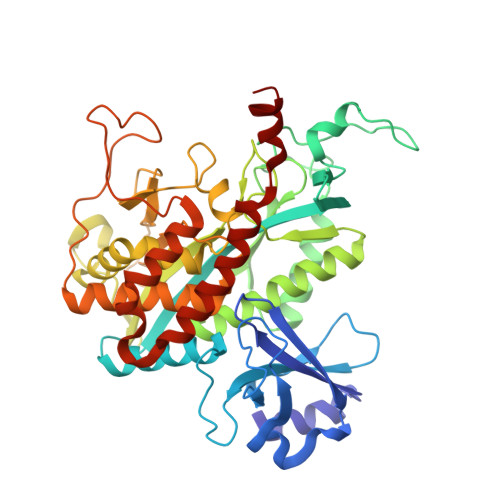The crystal structure of phosphinothricin in the active site of glutamine synthetase illuminates the mechanism of enzymatic inhibition.
Gill, H.S., Eisenberg, D.(2001) Biochemistry 40: 1903-1912
- PubMed: 11329256
- DOI: https://doi.org/10.1021/bi002438h
- Primary Citation of Related Structures:
1F1H, 1F52, 1FPY - PubMed Abstract:
Phosphinothricin is a potent inhibitor of the enzyme glutamine synthetase (GS). The resolution of the native structure of GS from Salmonella typhimurium has been extended to 2.5 A resolution, and the improved model is used to determine the structure of phosphinothricin complexed to GS by difference Fourier methods. The structure suggests a noncovalent, dead-end mechanism of inhibition. Phosphinothricin occupies the glutamate substrate pocket and stabilizes the Glu327 flap in a position which blocks the glutamate entrance to the active site, trapping the inhibitor on the enzyme. One oxygen of the phosphinyl group of phosphinothricin appears to be protonated, because of its proximity to the carboxylate group of Glu327. The other phosphinyl oxygen protrudes into the negatively charged binding pocket for the substrate ammonium, disrupting that pocket. The distribution of charges in the glutamate binding pocket is complementary to those of phosphinothricin. The presence of a second ammonium binding site within the active site is confirmed by its analogue thallous ion, marking the ammonium site and its protein ligands. The inhibition of GS by methionine sulfoximine can be explained by the same mechanism. These models of inhibited GS further illuminate its catalytic mechanism.
Organizational Affiliation:
UCLA-DOE Lab of Structural Biology and Molecular Medicine, Box 951570, University of California, Los Angeles, California 90095-1570, USA.

















